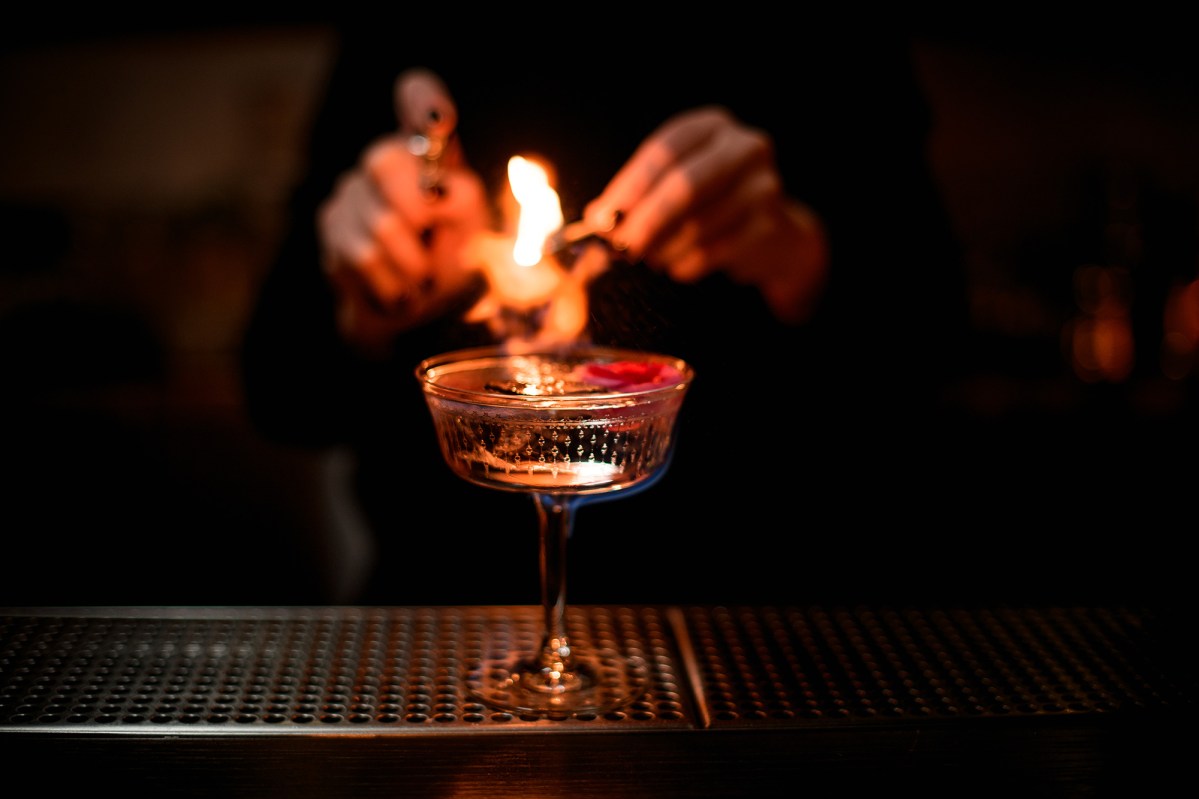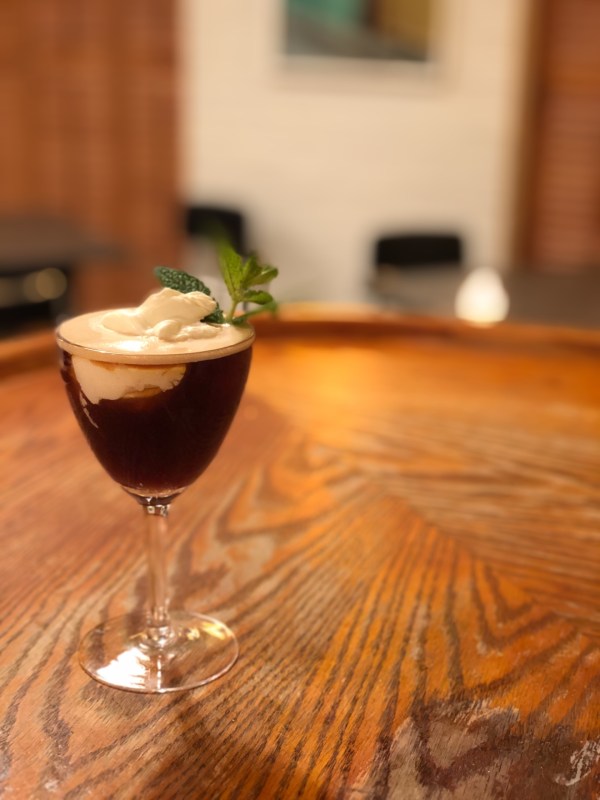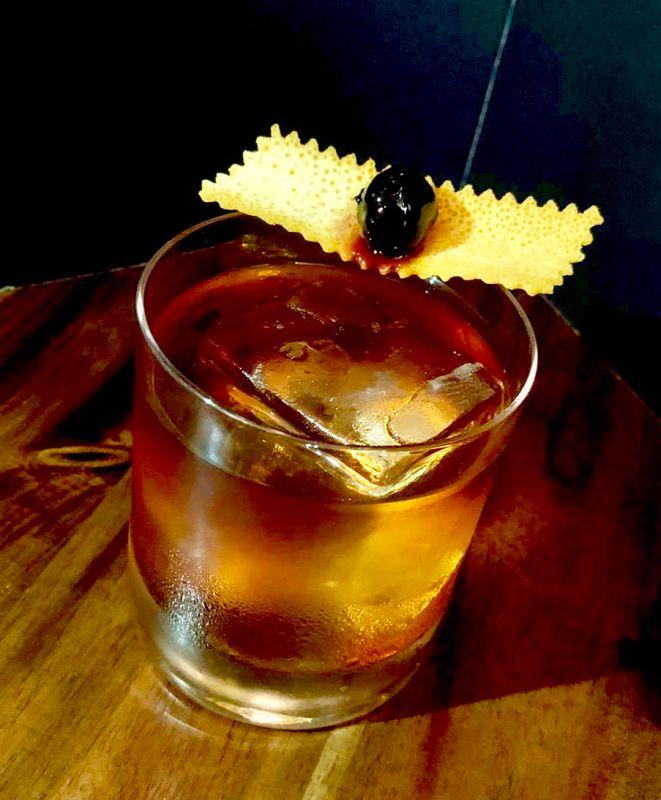The drastic popularity rise of the aperitif in recent years corresponds to a wider appreciation for not only the spirits and cocktails that start an evening off right but also the ones that conclude an excellent meal or a fun night hanging out with friends and family. The Italian digestivos known as amari can be found everywhere, but when it comes to capturing the attention of today’s trend-conscious imbibers, some versions have had a more difficult time than others.
A prime example? Sambuca, a classic Italian digestivo beloved by nonnas and nonnos the world over (including mine!). This distinct, immensely flavorful liqueur often suffers from its reputation as a favorite sipper of the geriatric set. However, plenty of bartenders consider Sambuca’s herbaceous flavor profile exciting and highly conducive to cocktails, leading us to believe that our grandparents had it right all along, and that we could be seeing a lot more of this heritage spirit in the future.
What Is Sambuca?
Sambuca is an Italian after-dinner liqueur made from anise seeds. It bears flavor similarities to Mediterreanean digestivos like ouzo and mastika and to other anise-based beverages like absinthe. Traditionally, Sambuca is served either straight-up or as an addition to coffee. Some Sambuca enthusiasts like to float 3 coffee beans atop a neat pour of Sambuca, allowing the beans to infuse the spirit with coffee flavor in a more subtle way than pouring a straight slug of Sambuca into an Americano would do. This service style, known as “Sambuca fly” (because the coffee beans resemble flies), sometimes involves setting the Sambuca on fire before drinking, giving the flames the opportunity to toast the beans.

Lead bartender William C. Frost of NoHu Rooftop Bar & Restaurant in Weehawken, NJ appreciates Sambuca for its ability to bring families together and fuel a convivial after-dinner atmosphere. “When I was growing up and we went out to eat or had family and friends over, everyone always had coffee and some sort of after-dinner drink after the meal. This is when the real conversation started to take place. For the next hour, over coffee and after-dinner drinks, great debates and unbelievable stories unfolded. Everyone got to speak, and everyone listened. Just because you had a different opinion, [that] didn’t mean we couldn’t sit around a table and share a meal, sip on some coffee and drinks, and enjoy each other’s company. I think we are missing this part of the meal nowadays,. To me, it has always been my favorite part; and this is why I believe Sambuca deserves a comeback,” Frost explains.
Why does Sambuca make an intriguing addition to a cocktail?
Anise spirits in general offer flavor complexity to cocktails, thanks to anise’s natural earthiness and nuance. Beverage director Liran Leibman of ZIZI in New York City includes numerous Mediterranean and Middle Eastern “anisettes” on his cocktail menus, telling us that “back in Israel, anisettes are a crucial part of every bar program and spirits collection of home bartenders! To be honest, my first hangover was from arak [a Levantine anise spirit closely related to Sambuca]. For most Mediterranean and Middle Eastern palates, anise is a familiar flavor and a shot of arak or ouzo on the rocks (with a hint of mint!) are common drinks.”
“Here, in a territory a bit more suspicious for these bold flavors, we use Anisettes for an extra layer of flavor. I love mastika, an Anisette with a mild, cedar-like flavor — it adds the perfect amount of sweetness to our signature cocktail, The Promised Land,” he adds.
“Mastika […] adds the perfect amount of sweetness to our signature cocktail.”
Beverage director Nazar Hrab of The Pineapple Club in NYC also values anise spirits as cocktail ingredients, and he has a special fondness for Sambuca in particular. “I barely use Sambuca as a shot as it is far too sweet for me and people are either really into it or totally opposed. As a modifier, however, it works great. Sambuca on its own is a really complex spirit, and just by adding a bit to the cocktail, [the drink] gains at least a couple more layers. Sour cocktails benefit a lot from it. Another fun play I have on it is in a whiskey sour with a split base between amaro and Sambuca instead of sugar,” Hrab tells The Manual.
Sambuca Cocktail Recipes
Get to know Sambuca by making yourself one of these anise-packed cocktails.
Pineapple Club Espresso Martini
(Created by Nazar Hrab)

“I’m a big fan of Sambuca in cocktails, [and] my favorite one [with Sambuca] is my take on the espresso martini. Instead of using vodka, I always go for a good Applejack, which makes the drink much more complex. Instead of just using simple syrup, I like to use Branca Menta; apples and mint have a really interesting tandem in the end. Obviously, I shot of espresso. And to finish this cocktail, I like to make Sambuca whipped cream behind the bar on the spot. After someone orders an Espresso Martini and gets this, I always get a surprised expression … but then they always go for a second one,” Hrab says of his Sambuca-laced martini variation.
Ingredients:
- 1.5 oz Applejack
- .5 oz Branca Menta
- 1 oz Sambuca
- 1 shot espresso
- 2 oz heavy cream
- 1 mint leaf
Method: Add applejack, Branca Menta, and espresso to a shaker. Shake vigorously and strain into a glass. Add Sambuca and heavy cream to a shaker and shake vigorously until combined into a smooth whipped cream. Spoon the whipped cream on top of the cocktail and garnish with a mint leaf.
Have Anise Day
(Created by Tom Barry, bar manager, Forma Restaurant, Los Angeles)

“Sambuca is such an interesting liqueur with a rich history to match its sweet yet intense taste. As a bartender, I enjoy Sambuca for the mystery and vitality that it brings to a cocktail. Its strong anise aroma allows for some of the most unique and exciting cocktails with an endless amount of flavor combinations,” Barry tells us of the rich dimensions that Sambuca offers his Have Anise Day cocktail.
Ingredients:
- 2 oz bourbon (Barry prefers Buffalo Trace)
- .5 oz Sambuca
- .5 oz amaro (Barry prefers Amaro Zucca)
- 2 dashes celery bitters
- 2 dashes plum bitters
Method: Add all ingredients to a cocktail shaker and stir until fully combined. Strain into a glass and garnish with an orange peel and a maraschino cherry.



